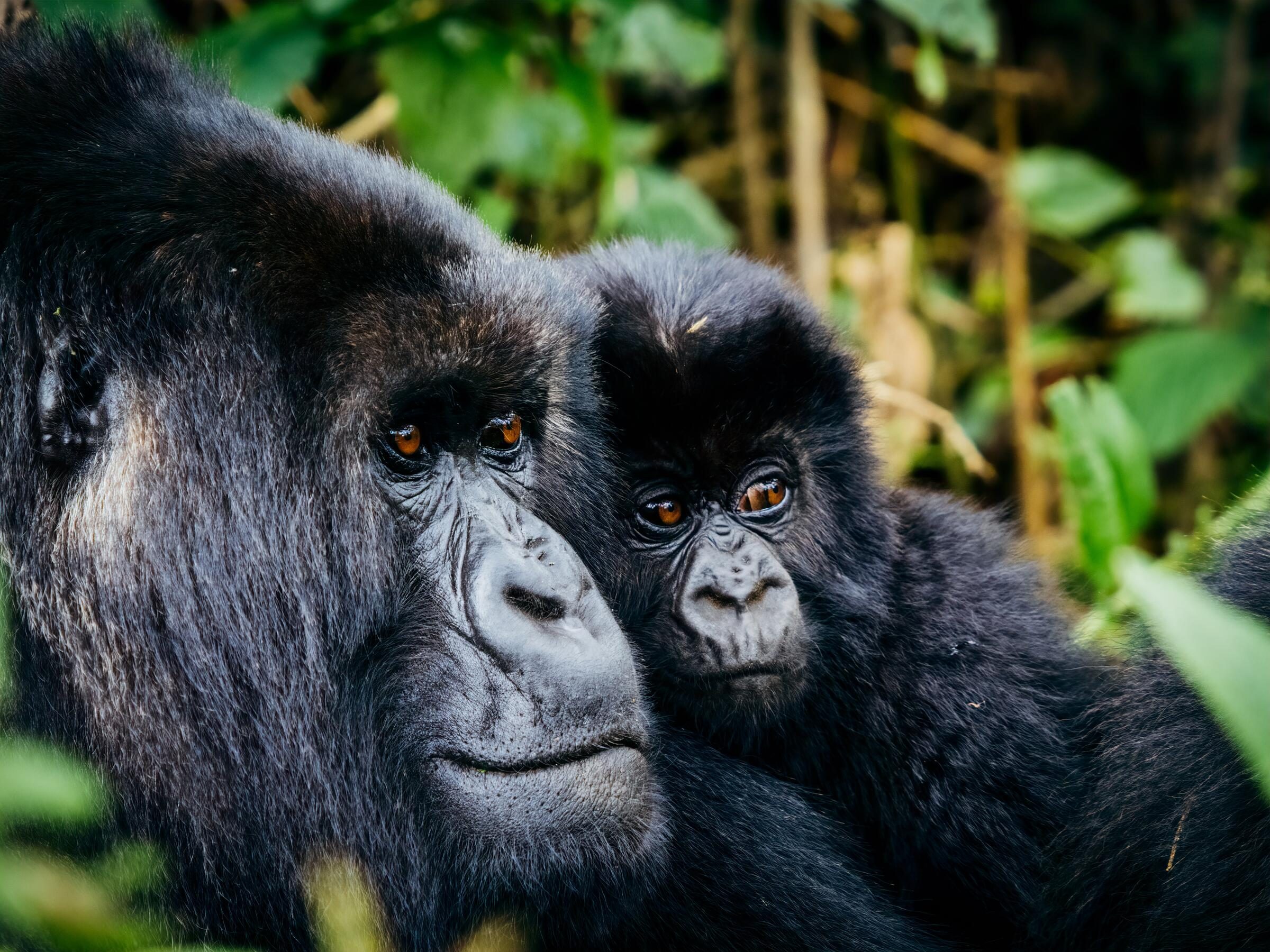How Hard Is Gorilla Trekking in Rwanda? Difficulty, Tips & What to Expect
The Magic and Challenge of Gorilla Trekking in Rwanda. Gorilla trekking in Volcanoes National Park, Rwanda is one of Africa’s most unforgettable wildlife adventures. But before you book your permit, you might wonder how hard is gorilla trekking in Rwanda? The answer: it’s moderately to highly challenging, depending on your fitness, weather, and which gorilla family you’re assigned. Yet, the experience is so awe-inspiring that most travelers agree it’s absolutely worth it. Let’s explore exactly what makes Rwanda’s gorilla trekking both tough and transformative
Terrain and Altitude: Climbing the Virunga Volcanoes
Volcanoes National Park sits in the Virunga Mountains, a chain of ancient volcanoes rising between 2,500 and 4,500 meters (8,200–14,700 feet) above sea level. Expect dense rainforest, steep slopes, bamboo forests, and muddy paths. The altitude can make breathing slightly harder, especially if you’re not used to high elevations.
Easy treks: 1–2 hours, gentle terrain.
Moderate treks: 3–5 hours, uneven ground, light climbing.
Hard treks: 6+ hours, steep, slippery, and physically demanding.
Even short hikes can be tiring at this altitude but your guides will set a comfortable pace.
Trek Duration: How Long Will You Walk?
Every morning, trackers locate the gorilla families and radio their positions to park rangers. Depending on where your assigned group is, the trek may last from 1 to 6 hours (roundtrip).
The gorillas move daily, so no one can predict exactly how far they’ll be. If you prefer an easier experience, you can request a closer group when booking — rangers try to accommodate these preferences.
Weather: Expect Mud, Mist, and Magic
Rwanda’s weather is famously unpredictable. Even during the dry season, light rain or fog can appear out of nowhere.
Trails can be muddy, wet, and slippery.
The forest canopy keeps it humid, even on cooler days.
You may need to duck under vines, climb over roots, or crawl through dense foliage.
Despite the challenge, the misty rainforest atmosphere is part of what makes gorilla trekking so enchanting.
Fitness Level: Do You Need to Be Super Fit?
You don’t need to be an athlete, but a reasonable level of fitness is important. If you can walk 5–10 km (3–6 miles) on hilly ground, you’ll manage fine.
Do regular hiking or brisk walking before your trip.
Strengthen your legs and core muscles.
Bring energy snacks and plenty of water.
Older travelers or those with limited mobility can request shorter treks, and the park usually honors such requests.
Safety and Support: You’re Never Alone
Rwanda’s gorilla trekking is safe, organized, and well-guided. Each group includes:
Professional rangers who lead the trek.
Armed guards for security.
Trackers who locate gorillas each morning.
You can also hire a porter for around USD20 to carry your backpack and help with tricky terrain highly recommended.
Walking sticks are provided at the start, and every guide is experienced with trekkers of all ages and abilities.
Best Time to Go: Choose the Right Season
For the most comfortable trekking conditions, plan your visit during the dry seasons:
June–September (long dry season)
December–February (short dry season)
During these months, trails are firmer and less slippery.
The wet seasons (March–May, October–November) bring lush, green scenery and fewer tourists — but also tougher, muddier trails.
The Reward: An Unforgettable Hour with Mountain Gorillas
After hiking for hours through misty bamboo forest, the moment you finally meet a mountain gorilla family is beyond words.
You’ll spend up to one hour watching them feed, play, and interact — often just 7–10 meters away. The sight of a silverback or the laughter of a baby gorilla erases every trace of fatigue. Nearly every visitor says the same thing: It was hard, but absolutely worth it.

Comment (0)